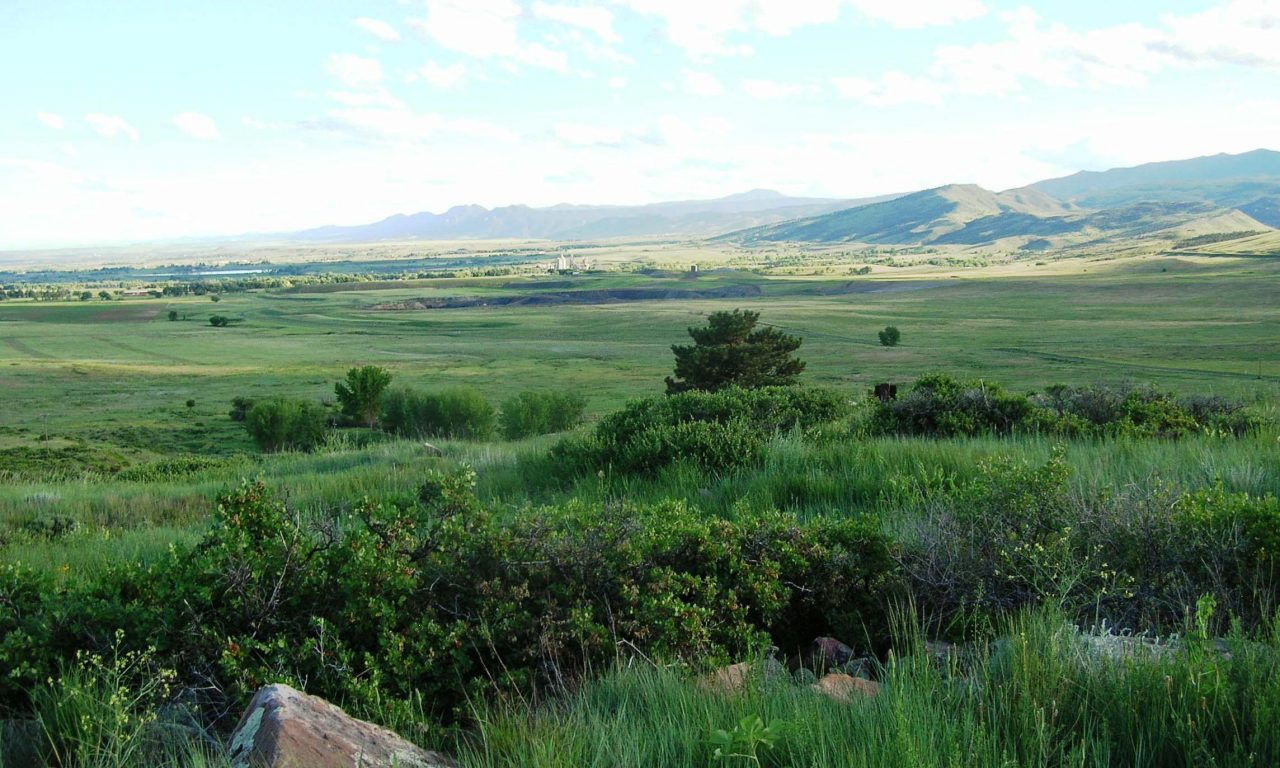On a warm summer day at Ron Stewart Preserve at Rabbit Mountain, you are just as likely to spot a prairie rattlesnake as a cottontail rabbit; this is perhaps the reason for its historical nickname, Rattlesnake Mountain. While the name Rabbit Mountain evokes images of the cottontails that have made this land their home, it is said that Ron Stewart Preserve at Rabbit Mountain was actually named for its resemblance to a sleeping rabbit, when viewed from the city of Longmont.
Indian Mesa Trail
Given its location and unique position above the plains, Rabbit Mountain provided a strategic refuge for early Native Americans who hunted bison. Hike the Indian Mesa Trail, and you will see that it offers a vast view of the surrounding land allowing Native Americans to locate herds of game and identify approaching danger. Anthropologists from the University of Colorado discovered dozens of archaeological sites, including rings from former camp sites, which confirm that natives inhabited Rabbit Mountain. The name Indian Mesa Trail pays homage to this history.
Eagle Wind Loop trail
This land provides the perfect habitat for birds of prey including prairie falcons, kestrels, hawks, and owls. When it came time to name the single trail at the property a couple of decades ago, one of Boulder County’s volunteers wanted to recognize the grander wildlife that frequent the area. The Eagle Wind Loop is named for the golden eagles that soar gracefully on the winds above this property. A hike to the apex of this loop brings you to the edge of a seasonal wildlife closure that protects the nesting grounds for a pair of golden eagles.
Little Thompson Overlook Trail
Hike the Little Thompson Overlook Trail all the way to the end and you will see spectacular views of this property’s unique geology. You will also see the Little Thompson River just to the north. The Little Thompson River drains areas at the northern border of Boulder County, and empties into the Big Thompson River near its junction with the South Platte River. It was important to highlight the water resources at this property where diversions from the Colorado-Big Thompson Project tunnel through Rabbit Mountain.
Ron Stewart Preserve at Rabbit Mountain
In September 2016, Boulder County renamed this property to honor the legacy of its retiring director, Ron Stewart. Through Stewart’s leadership as Parks and Open Space Director and as County Commissioner, Boulder County Parks and Open Space has become one of the most successful open space departments in the country. Rabbit Mountain was renamed the Ron Stewart Preserve at Rabbit Mountain to commemorate Ron’s decades-long commitment to public service, land preservation, and environmental stewardship, which has touched all corners of Boulder County.
In Bloom at Rabbit Mountain
As soon as the soil warms in spring, flowers begin to appear on Rabbit Mountain. All kinds come and go during March, April and May. Come and see, but please don’t pick the flowers! Grab your wildflower field guide for an inspiring hike along the Eagle Wind Trail.
Common flowering plants that you may see:
Blue
- Bluemist penstemon (Penstemon virens)
- Chiming bells (Mertensia lanceolata)
- Common stickseed (Lappula redowskii)
- Skullcap (Scutellaria brittonii)
- Orange
- Copper mallow (Sphaeralcea coccinea)
- Orange arnica (Arnica fulgens)
Pink
- Fremont geranium (Geranium caespitosum)
- Lanceleaf spring beauty (Claytonia rosea)
- Mountain mahogany (Cercocarpus montanus)
- Sidebells penstemon (Penstemon secundiflorus)
- Storksbill (Erodium cicutarium)
- Wax currant (Ribes cereum)
Purple
- Blue mustard (Chorispora tenella)
- Lambert locoweed (Oxytropis lambertii)
- Showy verbena (Glandularia bipinnatifida)
White
- Chokecherry (Padus virginiana ssp. melanocarpa)
- Death camas (Toxicoscordion venenosum)
- Easter daisy (Townsendia exscapa)
- Mouse-eared chickweed (Cerastium strictum)
- Salt & pepper (Lomatium orientale)
- Sand lily (Leucocrinum montanum)
- Whiplash erigonum (Erigeron colo-mexicanus)
- White onion (Allium textile)
- Wild plum (Prunus Americana)


